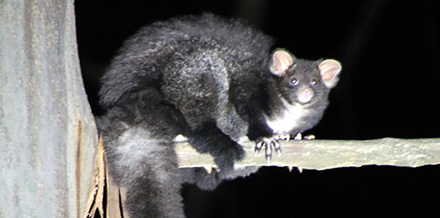 Post-harvest surveys have shown VicForests’ harvesting and regeneration practices are better protecting Victoria’s wildlife as species are now commonly found immediately within or around completed harvest areas. Source: Timberbiz
Post-harvest surveys have shown VicForests’ harvesting and regeneration practices are better protecting Victoria’s wildlife as species are now commonly found immediately within or around completed harvest areas. Source: Timberbiz
Presenting at Forestry Australia’s National Conference this week, VicForests’ forest scientist Michael Ryan highlighted the prevalence of species such as Greater Gliders after harvesting operations had been completed and Leadbeater’s Possums found foraging in regenerating forests as soon as five years after harvest.
“Since mid-2019 we have been using variable retention harvesting systems which, at its core, means that we better accommodate for wildlife in or next to each harvest area,” Mr Ryan said.
“We carefully balance our economic and environmental requirements by ensuring suitable habitat is retained and maintaining forest connectivity.”
“This has seen species such as the Greater Glider being detected in or around most of our completed harvest areas where they were found pre-harvest, and the preservation of suitable habitat trees and future habitat trees also allows for other hollow dependent species to use these sites.”
Mr Ryan and other VicForests’ scientists spend many late nights out in the forest using head-mounted spotlights and thermal cameras to observe species such as the Leadbeater’s Possum.
“Thermal equipment has been a real game-changer for monitoring animal species, especially those that are difficult to observe through conventional spotlight surveys, allowing us to get a better understanding of where these animals choose to find a home,” Mr Ryan said.
“We found it fascinating that species such as the Leadbeater’s Possum were not only discovered foraging in young post harvesting regrowth but were also found nesting in Silver Wattle. This wattle tree was only 34 centimetres in diameter and in less than 30-year-old post-harvest regrowth.”
“We are passionate about what we do here at VicForests, and preserving our wonderful wildlife is a central part of who we are.”





